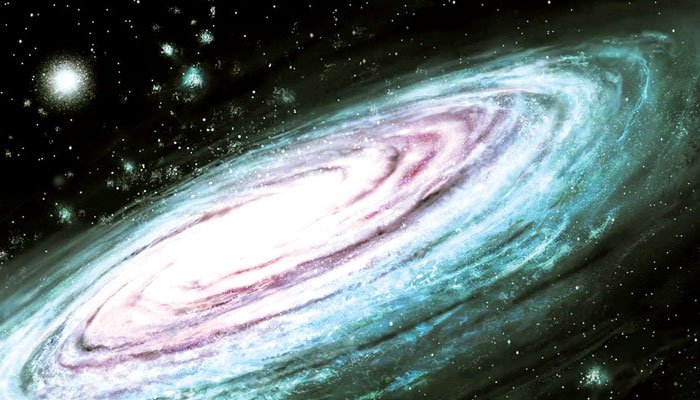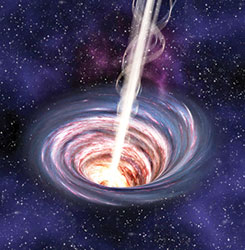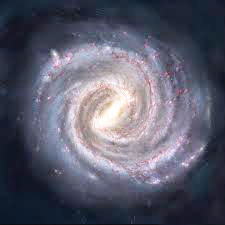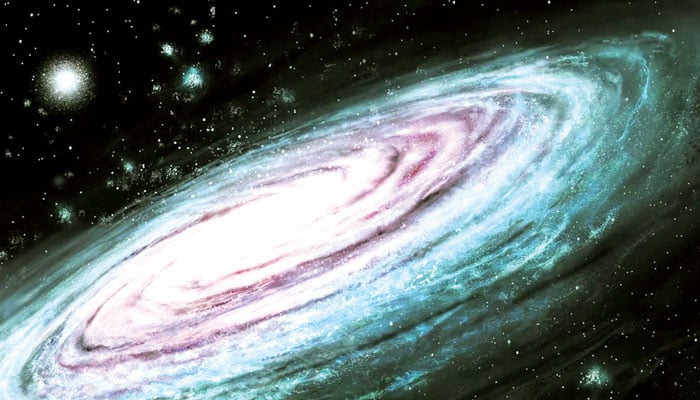
The earth we live on is 30 billion trillion times the size of an average person and our sun is 1 million times bigger than our earth. Around our sun there are eight Earth-like planets (in shape) and each planet has moons orbiting around it. All these together form a solar system. The mass of the Sun is 99% of the total solar system, but the Sun is not the largest star in our universe.
A star in the universe called Etacarine 9 is 5 million times bigger than our Sun. Many stars together form a galaxy and the galaxy we live in is called “Milky Way Galaxy” and in this galaxy there are more than 300 billion stars like our Sun.
This galaxy is so big that it would take us 100,000 years to cross it if we were to travel at the speed of light (i.e. 300,000 km per second), but this galaxy is not that big, our neighboring galaxy Andromeda is even bigger than that. It is double, but the matter of the galaxy IC 1011 is different, it is 600 times larger than our galaxy, just as stars combine to form a galaxy, many galaxies form a cluster together and the cluster in which our galaxy is located It is called Vico Cluster and it contains 47 thousand galaxies like our galaxy.
The matter does not end here, the clusters also form a Super Cluster together and the Super Cluster in which we live is called Local Super Cluster and there are around 100 clusters in it. And in our discovered universe there are a million Super Clusters that together form a beautiful structure.

Although we find the universe spread in vast spaces, but generally speaking space is not an empty space, but space or space is the space that contains galaxies, stars, planets, space rocks such as asteroids or comets and various gases. And it is filled with small and big fascinating space dust and gas clouds made of dust or soil particles and these space clouds are called nebula by astronomers.
A nebula is rich in elements that are essential for star formation. It would not be wrong to call them star-making factories. A large space cloud or nebula can be several light-years in size.
For this reason, a single nebula can give birth to many stars. A space cloud or nebula is a cluster or group of atoms and molecules that drift in space like dust clouds. For these space clouds, “nebula” which is a Latin word, is used. The first and earliest nebulae in our universe were formed after the Big Bang about 15 billion years ago. which were made of hydrogen and helium atoms. Hydrogen and helium are the most abundant and common simple gases found in nebulae. Therefore, these two elements are present in the largest quantity in the universe and they are also the essential components of the formation of stars.
In addition, a nebula contains the debris left behind by disintegrated old stars and some heavier elements. Gases are not present at the same density everywhere in any nebula, and density measurements are extremely important to astronomers, as the denser the gases or air in a nebula, the greater the gravitational force they exert on it. Forces will be created, because the excess amount of gases will accumulate more in these places and the whole atmosphere keeps pushing the gases more and more in these places and thus the process of disintegration in a nebula continues and It splits into several dense or high density cloud clusters.

This process of cluster formation in space clouds is called Gravitational Collapse of Nebula, after which each small cluster formed becomes a star. The first stars that appeared in space were formed in places where the dust became so dense that gravity pulled the atoms so close to each other that their nearby nuclei collided. The process of fission led to the beginning of Nuclear Fusion.
Therefore, before the emergence of stars, there were countless space clouds in space and after that, more space clouds were formed when stars exploded as supernovas and their fragments and particles spread everywhere. gone. The new space clouds formed from the debris of supernovae exploded stars contained not only hydrogen and helium, but various elements such as carbon, oxygen, nitrogen, silica, iron and some heavier elements such as gold and uranium. Inside the new space clouds, atoms combined to form simple molecules such as water, sugars and other hydrocarbon molecules.
Only then did more complex molecules such as amino acids continue to form, and eventually the dust density in some clouds increased to such an extent that new stars and then planets formed around them. The universe is still forming new nebulae today and uses the same supernova technique for this.
That is, whenever a star explodes into a supernova or vacuum, and the closest example is the Crab Nebula, which was formed in 1054 AD. In order to see these space clouds or nebula, you have to stay in a remote place far from the city on a dark night. Where you will be able to see them even without the help of a telescope.
If you look at an image of our neighboring galaxy Andromeda taken by the Hubble telescope, you will see what looks like grains of sand on a beach. But this is not sand, but every point in it is a star, and every star in it is at a considerable distance from the nearest star. Each point in it is so far from the other point that NASA’s latest technology cannot measure the distance between the two points even in a hundred years. Here the point refers to the star.
This galaxy is 2 million light years away from our Earth. The Andromeda Galaxy is 260,000 light-years across, with a trillion stars and more than a billion planets, according to NASA astronomers. If you are thinking that this is the biggest galaxy, then you are definitely wrong, this galaxy is like a sandbar in front of the Alcyneus galaxy, because Alcyneus is much bigger than it. The Alcyneus galaxy is 16.3 million light-years away. If we were to sit in a spaceship traveling at the speed of light, i.e. “7 times around the Earth in a second”, it would take 16 million years to travel from one end of the Alcyneus galaxy to the other. It will take
From this you can imagine how big it would be, but there are bigger galaxies in the universe. With the help of string theory, we can reveal the secrets of the Big Bang. Einstein’s formulas fail at the exact moment of the Big Bang and at the center of a black hole. These are two of the most interesting places in the universe that are beyond our understanding because of this weakness of Einstein’s formula. We need a better theory than this and string theory can fulfill this need.
String theory can tell us about the conditions before the Big Bang, allowing us to understand the causes of the creation of the universe. String theory claims that our universe is not alone, but part of a multiverse, including trillions and universes. How did the Big Bang happen? Einstein’s equations tell us that we are like a worm on an expanding soap bubble. This is the epitome of the Big Bang Theory. String Theory tells us that many more such bubbles exist in the multiverse. Each bubble is a universe. When two bubbles collide, a new universe is created.
When one bubble splits into two bubbles, one universe splits into two universes. We believe that the Big Bang was either a merger of two universes or a result of one universe splitting into two universes. If there are more than three directions or dimensions (called dimensions in English) Wormholes are not just a hypothesis but a real solution to Einstein’s equations. String theory also predicts wormholes. Is it practically possible to pass through wormholes? We don’t know that at the moment.
There is a debate among experts whether humans can pass through a wormhole and go to another universe. If this is possible, then it would be possible to use wormholes as time machines. Because string theory is about everything in the universe and the multiverse. So this theory is also about time. According to Einstein’s equation, it is theoretically possible to build a time machine, but it is extremely difficult to build it in practice.
To do this requires a lot of energy that cannot be obtained from delorium and plutonium. Billions of years from now, the universe will become extremely cold. At that time all the stars will disappear and the universe will become infinitely vast and infinitely cold.
setTimeout(function(){
!function(f,b,e,v,n,t,s)
{if(f.fbq)return;n=f.fbq=function(){n.callMethod?
n.callMethod.apply(n,arguments):n.queue.push(arguments)};
if(!f._fbq)f._fbq=n;n.push=n;n.loaded=!0;n.version=’2.0′;
n.queue=[];t=b.createElement(e);t.async=!0;
t.src=v;s=b.getElementsByTagName(e)[0];
s.parentNode.insertBefore(t,s)}(window,document,’script’,
‘https://connect.facebook.net/en_US/fbevents.js’);
fbq(‘init’, ‘836181349842357’);
fbq(‘track’, ‘PageView’);
}, 6000);
/*setTimeout(function(){
(function (d, s, id) {
var js, fjs = d.getElementsByTagName(s)[0];
if (d.getElementById(id)) return;
js = d.createElement(s);
js.id = id;
js.src = “//connect.facebook.net/en_US/sdk.js#xfbml=1&version=v2.11&appId=580305968816694”;
fjs.parentNode.insertBefore(js, fjs);
}(document, ‘script’, ‘facebook-jssdk’));
}, 4000);*/



